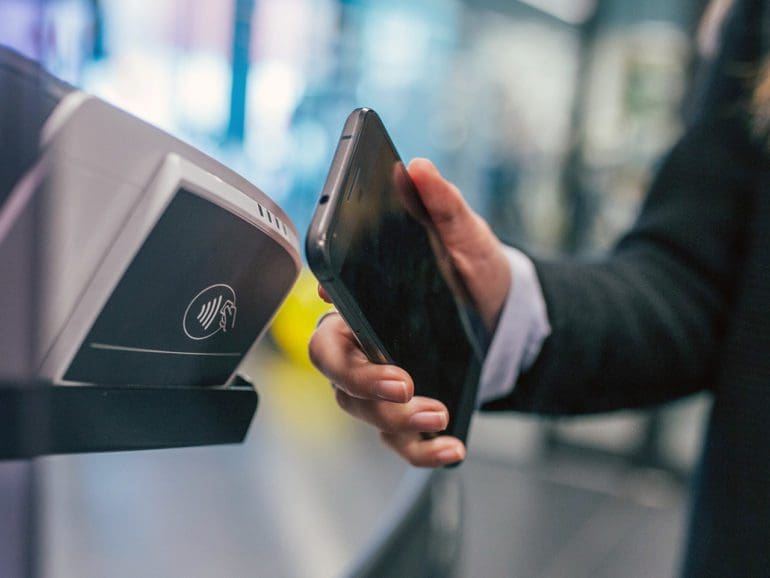The following is a guest post by Jill Bohlken, Director of Enterprise Sales, PayNearMe.
As businesses batten down the hatches to weather runaway inflation and a potential recession, many are re-evaluating how to make their operations more efficient.
But what about bill payments? That might seem like a cut-and-dried area with little room for innovation or improvement. Still, a modern payments technology platform can help you reduce expenses and improve on-time customer payments – not to mention boost customer satisfaction and loyalty. How’s that for a recession-proofing strategy?
With belts tightening, it makes sense to look around for a payments provider that enables you to reduce costly customer service calls, eliminate manual payment touches, and dramatically reduce or eliminate the countless hours internal IT resources spend maintaining and updating outdated technology. This article will walk you through signs it’s time to make a switch and provide some tough questions to ask before leaping.
Five signs it’s time for a change
No one makes an impulsive choice to rip and replace a payments platform. It’s a weighty decision that requires a lot of thought, planning, and research. However, the benefits of an improved customer experience, an increase in on-time payments, and significant cost savings make a simple decision: say goodbye to outdated technology that requires internal IT resources to maintain and update. Here are five signs it’s time to move to a modern payments platform:
- Lack of platform flexibility: Requiring IT resources to manage and update your existing payments platform every time you want to add a payment type or channel or automate a process to reduce manual touches is time-consuming and costly. A configurable SaaS solution that can quickly and easily be adapted to your requirements can help you increase automation and reduce operational expenses.
- Expensive IT resources: A payments solution consisting of cobbled-together technologies that weren’t designed to work together seamlessly requires constant maintenance and update support from internal IT resources. Conversely, a modern payments platform can provide all the functionality needed with a single integration, which dramatically reduces – or can even eliminate – the need to spend time and money maintaining and updating the payments system.
- Friction in the payment process: Customers expect bill pay to be as easy as paying a friend with Venmo – no clunky login or account information needed. Find a payment platform that makes it easy to offer customers additional payment types and channels for bill pay while creating a fast and frictionless payment experience.
- Inadequate customer support: Waiting weeks to resolve technology issues is putting the brakes on your company’s ability to improve operational efficiencies. You should expect issues to be resolved in a reasonable, agreed-upon manner.
- System downtime: Working around downtime during maintenance windows and product releases interfere with day-to-day tasks, may frustrate your customers, and can impact your ability to accept payments. Expect the payments platform provider to have robust systems and strategies to avoid downtime, including zero downtime releases. A SaaS provider performs better at this measure because its entire solution is built using a single code base. In contrast, providers that must maintain a platform built by cobbling together various acquired point solutions – each having a unique code base – may struggle to provide updates without service interruptions.
If you relate to one or more of these signs, it’s a good time to look for a payment platform provider that meets your expectations. But first, consider your priorities and compile a list of detailed questions to ensure the partner you choose can meet your needs now and in the future.

Top payment experience priorities
Priority: A modern, flexible payments platform that can be easily updated to keep pace with changing consumer expectations for how and when they pay their bills.
Consumer bill payment expectations are changing, and your business needs the flexibility to modernize without taxing your internal IT resources. For instance, a recent bill pay study revealed consumers want more mobile-friendly options for how and when they pay their bills: 38% of consumers say if they had the choice, they would be likely or very likely to use Apple Pay or Google Pay to pay bills; 27% of consumers point to Venmo as an essential option for bill pay.
Common challenge: Every new payment type requires a separate integration, which taxes the internal IT team.
Simple changes like adding or removing payment types shouldn’t require an overhaul of your existing payments integration. A modern payments platform allows you to offer a full range of popular payment types with a single integration. By simply toggling payment types on or off, you should be able to offer debit cards, credit cards, ACH (bank account), and digitized cash payments, which provide a barcode to allow customers to pay by cash in person at specific retail locations. Newer, mobile-focused payment types should also be available for more tech-savvy customers, including Apple Pay, Google Pay, PayPal, and Venmo.
You also should be able to configure logic-based business rules to automatically add or subtract available payment types based on individual customer payment patterns — disabling certain payments for payers with multiple NSFs, for example.
When you need the flexibility to quickly add new payment types while maintaining traditional methods still required for segments of your customer base, look for a payment platform provider that can do both through a single integration and regular, hassle-free updates.
Top Questions to Ask:
- Which convenient payment options will we be able to offer customers?
- Do you offer an integrated UX / UI for all payment types to make the experience easier for our customers? What is the timeline for these requests, and do they come at an additional cost?
- Do you offer clients a direct point of contact during the configuration process to help set up these rules and custom fields?
- Will we be able to get all this functionality with a single integration, or will it require a separate integration for each payment channel?
Priority: A payments platform that helps reduce agent-led payments by driving the adoption of self-service transactions.
There’s a word for customers who walk in and make payments with cash or money orders, mail-in payments that require manual processing or call customer service to make a payment via phone – expensive.
Suppose your call center handles a large percentage of bill payment calls. In that case, you’re likely paying a higher cost of acceptance than necessary and putting unnecessary strain on your customer service resources. For example, the average cost of handling customer calls is $0.95 per minute, and each call lasts approximately 4 minutes, which can add up quickly.
Common challenge: Moving customers to electronic, self-serve payments requires overcoming existing customer habits and onboarding new self-service payment channels that make bill payments easier.
Like adding payment types, expanding payment channels shouldn’t tax internal IT resources. Consider the case of Turner Acceptance Corp., a customer-focused financial company specializing in personal installment and auto loans. With a modern payments platform, Turner could quickly add self-pay options like pay by text and IVR, increasing self-service payments by more than 20% in a few short months.
Other businesses are using modern payment platforms to transition check payers to electronic payments by having their bill pay provider include unique, individualized QR codes on their paper statements. Payers can scan the code with their mobile device directly to their payment screen – no passwords or account numbers are needed.
OneMain Financial eliminated in-branch cash payments when the company implemented a modern payments platform. Customers who prefer to use cash now receive a payment barcode that can be scanned and paid at thousands of retail locations around the U.S. Each time they want to make a payment, they visit a neighborhood retail location and pay the cashier. The cashier provides the customer with a receipt and a guaranteed cash payment posted to the customer’s OneMain Financial account.
When you work with a payments platform provider with these types of self-service innovations – all with a single integration – you will see your operating costs drop dramatically.
Top Questions to Ask:
- What self-service options are available through your platform?
- How can you help us eliminate in-person cash payments but still accommodate customers who prefer to pay with cash?
- Is the customer-facing portal available in both English and Spanish so payers can easily make payments independently?
- When onboarding new payment channels, will the system need to be reconfigured to integrate with our record system?
Priority: A modern payments platform with built-in customer engagement technology that helps increase on-time payments.
Engaging customers regularly builds a good rapport and keeps them informed about payment due dates to help them pay on time. That’s important for consumers, 53% of whom grade themselves a C or lower in knowing when their bills are due, according to the study. Not surprisingly, 50% say they’ve had at least one bill past due in the previous 12 months.
Common challenge: A payment reminder solution that isn’t fully integrated with the payments solution and customer payment data.
A built-in engagement engine makes a huge difference because all customer payment data sits in a single database. This makes it easy to build logic-based business rules that trigger reminders and notifications for customers based on their unique payment behaviors.
For example, based on the individual’s previous payment behavior, a modern payments platform can send reminders at predetermined points in the bill pay cycle – such as two weeks and two days before the payment is due and when the payment is one day past due. Call-to-action messaging also shifts depending on the data. For those with a history of late payments, more frequent or urgently worded reminders help them pay on time.
Related:
Look for a provider that can drop unique, personalized links into engagement messages that take customers into their verified payment flow, allowing them to complete payments effortlessly. The provider also should integrate seamlessly with digital wallets to enable you to include unique, personalized payment links in push notifications sent through the customer’s digital wallet app, which allow a one-click connection to the wallet card for fast, frictionless payments.
Customer engagements help improve on-time payment and lower operating costs because they direct customers into their payment flow without needing customer assistance.
Granted, it’s tricky to do this right. Look for a payment vendor with engagement communications built into its solution – not as a third-party add-on.
Top Questions to Ask:
- Do you offer the ability to send text, email, or push notification reminders and other communications to customers?
- Is that a service included in the payments platform or provided by a third-party vendor?
- Do payment links require customers to login in and provide payment data?
- Do you provide reporting for customer engagements, including information about whether they were successfully delivered?
- Can your solution access customer payment data to trigger notifications based on specific behaviors?
Bill payment is an essential component of your business and a constant touchpoint with your customers. That’s why it’s critical to take the time and effort to identify a payment platform that can engage your customers and move them toward self-service. It must be flexible and configurable, and your partner’s support team should quickly respond to operational challenges and resolve issues quickly.
Ask challenging questions, and let the answers be your guide.


